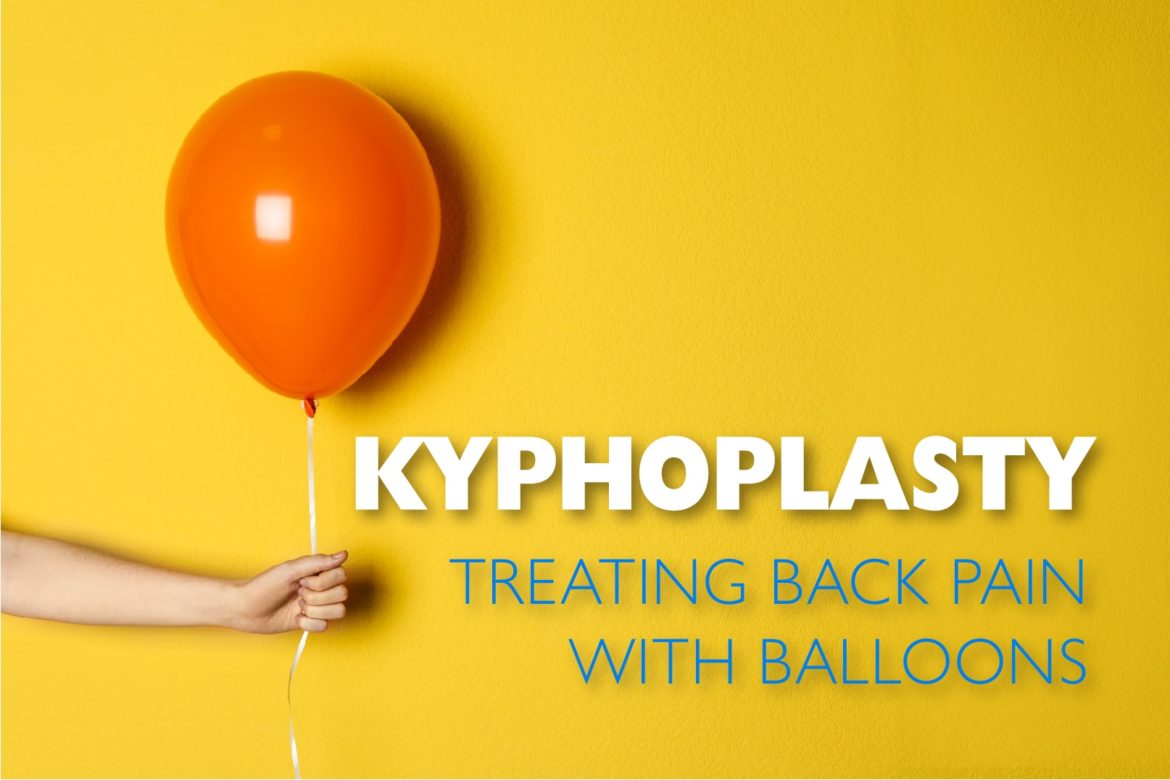Millions of Americans experience back pain every year. If you’re over the age of 65, you have a greater risk of a bone in your back, called a vertebrae, breaking. This condition is called a vertebral compression fracture (VCF). If you or a loved one has a compression fracture, kyphoplasty is a minimally invasive procedure that may offer relief.
What is a Vertebral Compression Fracture (VCF)?

The spine is made up of 33 bones called vertebrae. When one of these bones breaks, doctors call it a compression fracture. These fractures happen most often to bones that have weakened over time and can no longer bear weight. Once pushed past its breaking point, the bone collapses.
Compression fractures can happen as a result of an accident, like a car crash. But they can also occur as a result of a long decline in bone health. Vertebrae that have been weakened over time by osteoporosis or cancer (such as multiple myeloma and lymphoma) are especially vulnerable to fracture.
Symptoms of a compression fracture include sudden onset of back pain or increased pain while standing or walking. A loss of spinal mobility or height when standing may also be a sign of a fracture.
More than 700,000 compression fractures occur in the U.S. every year. Sometimes a compression fracture is misdiagnosed as soft tissue pain. As a result, approximately two thirds of compression fractures are undiagnosed and go untreated every year.
Treatment
There are a variety of treatment options available for those experiencing compression fracture. Doctors may recommend bed rest, a back brace and/or pain medications to treat this condition. Using these options, your compression fracture may take up to three months to heal.
If these non-surgical options aren’t effective, your doctor may turn to a surgical alternative.
Kyphoplasty: A Minimally Invasive Option

Kyphoplasty is a minimally invasive procedure used to treat compression fractures. While performing a kyphoplasty, interventional radiologists use fluoroscopy, or continuous x-ray, to guide their movements. Fluoroscopy creates a live x-ray feed that allows the doctor to see inside a patient while performing a procedure.
Using this live x-ray feed, the radiologist guides a special type of needle into the patient’s fractured vertebrae. Once the needle is in place, the doctor inflates a small balloon inside the vertebra. This restores the vertebra to its normal shape and height. The inflated balloon compresses the soft bone tissue inside the vertebra, leaving a cavity.
Using a second needle, the interventional radiologist then fills this cavity with a surgical cement called PMMA. The PMMA hardens quickly and stabilizes the vertebra, preventing it from collapsing again. After the needles are removed, the patient doesn’t even need stitches, just a bandage. Altogether, the procedure takes about an hour per vertebra.
After a kyphoplasty, patients generally experience significantly reduced back pain. They also have a lower risk of further compression fractures and an improved quality of life.
Is Kyphoplasty Right for You?
Kyphoplasty is one of several options used to treat compression fractures. Doctors may recommend a kyphoplasty after other measures fail to provide relief. They may also recommend kyphoplasty if a patient’s fractured vertebra is putting pressure on the spinal cord.
If you or a loved one has suffered a compression fracture–or has the symptoms–talk to your care provider about kyphoplasty. Or contact one of the highly skilled interventional radiologists at the University of Virginia to learn more about this procedure.
Know that painful compression fractures do not have to rule your life. Real treatment options, like kyphoplasty, exist to help get you or your loved one back on track.



